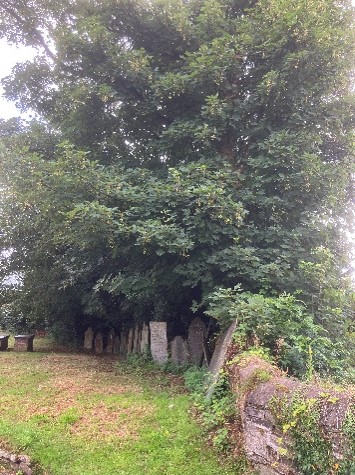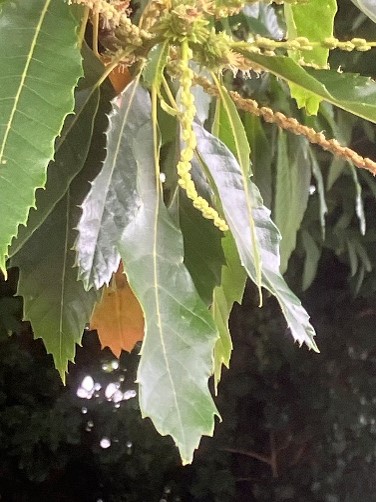Some trees found in St Sampson's churchyard
You will see these trees in St Sampson's churchyard
Yew Tree (Taxus baccata)
 The yew is a well-known tree of churchyards. Yew trees can live for hundreds of years. It is an evergreen tree - more than 500 churchyards in England and Wales contain yew trees that are at least as old as the church itself. This association with Christian religion (and possibly even older beliefs) and its ability to reach extreme old age have ensured that yew is now surrounded by many myths. The yew is one of the longest-lived native species in Europe. This has made it a symbol of death and doom, but it provides food and shelter for woodland animals.
The yew is a well-known tree of churchyards. Yew trees can live for hundreds of years. It is an evergreen tree - more than 500 churchyards in England and Wales contain yew trees that are at least as old as the church itself. This association with Christian religion (and possibly even older beliefs) and its ability to reach extreme old age have ensured that yew is now surrounded by many myths. The yew is one of the longest-lived native species in Europe. This has made it a symbol of death and doom, but it provides food and shelter for woodland animals.
It has dense, glossy, dark green needles and bright red berries with a single dark seed.
Sycamore (Acer pseudoplatanus)
 Sycamore might have been introduced by the Romans or in the 1500s. Since then, it has colonised woodland becoming a source of food and shelter for wildlife including aphids that leave behind their tacky honeydew. These broadleaf trees can grow to 35m and live for 400 years. The bark is dark pink-grey, and smooth when young, but becomes cracked and develops small plates with age. Twigs are pink-brown and hairless.
Sycamore might have been introduced by the Romans or in the 1500s. Since then, it has colonised woodland becoming a source of food and shelter for wildlife including aphids that leave behind their tacky honeydew. These broadleaf trees can grow to 35m and live for 400 years. The bark is dark pink-grey, and smooth when young, but becomes cracked and develops small plates with age. Twigs are pink-brown and hairless.
Sycamore has distinctive winged fruits known as samaras.
Look out for leaf veins which are hairy on the underside.
Laurel (Prunus lusitanica)
 The Laurel native to Spain and Portugal, was introduced to Britain in 1648. It can now be found growing wild in woods as a shrub or small tree.
The Laurel native to Spain and Portugal, was introduced to Britain in 1648. It can now be found growing wild in woods as a shrub or small tree.
The evergreen leaves are glossy, toothed and pointed.
Sweet Chestnut (Castanea sativa)
 Loved by the Romans. These long-lived giants, with their prickly husks and deeply grooved bark, give us our classic Christmas nut a roasted winter treat here in the UK. Sweet chestnut is a deciduous tree which can reach 35m when mature and live for up to 700 years. They belong to the same family as oaks and beeches. The bark is grey-purple and smooth, and develops vertical fissures with age. The twigs are purple-brown and buds are plum, red-brown and oval in shape. They can develop vast girths which can reach up to 2m in diameter.
Loved by the Romans. These long-lived giants, with their prickly husks and deeply grooved bark, give us our classic Christmas nut a roasted winter treat here in the UK. Sweet chestnut is a deciduous tree which can reach 35m when mature and live for up to 700 years. They belong to the same family as oaks and beeches. The bark is grey-purple and smooth, and develops vertical fissures with age. The twigs are purple-brown and buds are plum, red-brown and oval in shape. They can develop vast girths which can reach up to 2m in diameter.
Look out for widely spaced teeth around the edges of leaves. The seeds develop inside the prickly, green seed cases.
For more information click here
A-Z Guide - British Trees – Woodland Trust